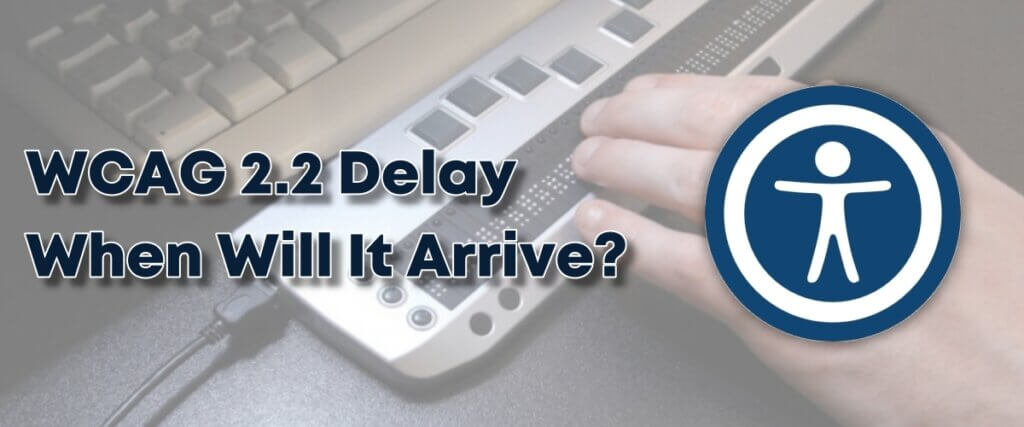The U.S. Department of Justice (DOJ) issued a new guidance on March 18, 2022, on web accessibility under Titles II and III of the Americans with Disabilities Act (ADA). The approach emphasizes the importance of web accessibility for the DOJ.
It also addresses accessibility requirements of the state, local, and federal government and public accommodations or businesses to ensure accessibility to people with disabilities.
DOJ declines to adopt WCAG 2.0 as a legal standard in the absence of regulations
The guideline covered flexibility entities in compliance with highlighting common accessibility barriers and fixes. However, the DOJ declined to endorse Web Content Accessibility Guidelines (WCAG) as a legal standard without further regulation.
In the absence of formal regulations, public accommodations have flexibility in complying with the ADA’s general requirements of nondiscrimination and effective communication. And any noncompliance with a voluntary technical standard for web accessibility doesn’t have to indicate noncompliance with the ADA.
US DOJ web accessibility guidance
The US DOJ web accessibility initiative covers various topics, including:
- The importance of web accessibility
- Web content accessibility compliance tips
- Barriers inaccessible websites create for people with disabilities
- When web content has to be accessible as per the ADA.
Everything is in plain language and user-friendly explanations that anyone without legal or technical backgrounds can easily follow.
The Guidance will thus help the public better understand how to ensure website compliance for users with disabilities. People with disabilities deserve equal access to services, goods, and programs provided by the government and businesses, even offered through websites.
The Guidance on web accessibility also reviews the departments’ work advancing website accessibility for people with disabilities through statements of interest and enforcement matters.
Web accessibility features

The DOJ noted some practices that businesses should bear in mind to make their websites accessible like:
-
Using proper color contrast in text
Having sufficient color contrast between the text and background lets people with limited vision or colorblindness easily read colorful text.
-
Use of text cues for colored text
Text cues should be included where text colors are used to provide information, making it easier for people who cannot perceive colors. For example, the word ‘required’ is used in red to indicate necessary form fields.
-
The use of alt text in images
Text alternatives are a must for conveying the purpose of an image to people who are blind and to users who use screen readers. However, only short and descriptive text alternatives are proven helpful to screen reader users.
-
Including captions to videos
Including accurately synchronized captions to videos make the videos accessible to users with auditory problems. These captions help users identify anyone who speaks in the video.
-
Labeled online forms
Adding labels, clear instructions, and keyboard access increase the accessibility of online forms. Blind users and users using screen readers depend on labels to know what to put into each form box.
Screen reader users should also be automatically informed for incorrectly entering a form field. For example, giving automatic alerts to tell them of wrongly entering a date.
-
Browser zooming abilities
People with visual disabilities should be able to use the browser’s zoom feature to increase the font size to see things more clearly.
-
Proper use of headings
Correctly placing headings in the website layout while designing the page helps people using screen readers navigate and understand the page layout.
-
Providing keyboard access and mouse navigation
Keyboard access means users with disabilities can easily use the keyboard to navigate the web page and digital content instead of depending on a mouse.
-
Accessibility checks
The proper use of automated accessibility checkers and overlays can fix website problems. However, a clean report does not always mean everything is accessible, and even reports with few errors do not always indicate that there are accessibility barriers.
A combination of manual and automated website checking helps you better understand your site accessibility.
-
Accessibility issue reports
By providing a means for the public to report accessibility barriers, like an accessibility contact form, website owners can quickly fix accessibility issues.
Significant Website Accessibility Guidance Takeaways

There are three main takeaways related to the issue of the DOJ web accessibility guidance:
- The first is that the DOJ may not regulate this area as it once said it would. Nor would it offer any beneficial guidance on web accessibility questions that arise in web accessibility litigation.
- The second is that while favorably referencing it, the DOJ has rejected the WCAG legal effects twice. So businesses are left without any standard to defend their website’s accessibility. This can be considered suitable for businesses as they can argue that WCAG is not the standard. Businesses can also say that whatever accessibility it offers is enough, even if it does not meet the worldwide web consortium WCAG standards.
- The third is that the DOJ has clarified that the services and privileges of businesses open to the public, including its website, are covered by the ADA and are accessible. The Guidance, however, does not answer the critical question about whether some online-only businesses are also referred to as public accommodations covered by ADA.
The relevance of web content accessibility guidelines
Although the DOJ hasn’t adopted any technical standards, the WCAG is essentially the only standard in town. And it is why the DOJ’s mention makes it relevant as a guide for the business community to achieve accessibility.
Employers should emphasize ensuring web accessibility for people with cognitive and learning disabilities. The present WCAG has some requirements for cognitive accessibility, like using plain language and consistent navigation to help users navigate web content more accessible to find wherever they need and to understand the content easily.
FAQ
-
1. What are the 4 principles of web accessibility?
The four main guiding principles of web accessibility are known by the acronym POUR. The four letters stand for perceivable, operable, understandable, and robust.
-
2. What is the current standard for web accessibility?
WCAG 2.1 is the current and most relevant standard for web accessibility.
-
3. Is WCAG 2.0 a legal requirement in the USA?
Yes, it is a legal requirement for federal agencies and their contractors in the USA. However, the answer is complicated for private businesses. They do not have to comply with specific standards like WCAG legally, but their website should be accessible.
-
4. Does the ADA require websites to be accessible?
Businesses and state and local governments have the flexibility about compliance with the ADA’s general requirements of nondiscrimination and adequate communication provisions. However, they have to ensure that people with disabilities can access the programs, goods, and services they provide to the public and online.
We Can Help Make Websites Accessible

Website accessibility is a long-term commitment, and the ADA prohibits discrimination. So because of the constant technological changes and advancements, website compliance is not something you can do once and forget. However, keeping track of the DOJ web accessibility requirements and guidelines and reporting accessibility problems can be tedious and time-consuming.
This is where we at adasitecompliance.com, your #1 source for ADA website compliance, can help. We can take care of your website accessibility requirements by constantly checking, reporting accessibility issues, and making the necessary changes.
Share via:

Speak With An Expert Now
Have a question?
We’re always here to help.
The ADA prohibits any private businesses that provide goods or services to the public, referred to as “public accommodations,” from discriminating against those with disabilities. Federal courts have ruled that the ADA includes websites in the definition of public accommodation. As such, websites must offer auxiliary aids and services to low-vision, hearing-impaired, and physically disabled persons, in the same way a business facility must offer wheelchair ramps, braille signage, and sign language interpreters, among other forms of assistance.
All websites must be properly coded for use by electronic screen readers that read aloud to sight-impaired users the visual elements of a webpage. Additionally, all live and pre-recorded audio content must have synchronous captioning for hearing-impaired users.
Websites must accommodate hundreds of keyboard combinations, such as Ctrl + P to print, that people with disabilities depend on to navigate the Internet.
Litigation continues to increase substantially. All business and governmental entities are potential targets for lawsuits and demand letters. Recent actions by the Department of Justice targeting businesses with inaccessible websites will likely create a dramatic increase of litigation risk.
Big box retailer Target Corp. was ordered to pay $6 million – plus $3.7 million more in legal costs – to settle a landmark class action suit brought by the National Federation of the Blind. Other recent defendants in these cases have included McDonald’s, Carnival Cruise Lines, Netflix, Harvard University, Foot Locker, and the National Basketball Association (NBA). Along with these large companies, thousands of small businesses have been subject to ADA website litigation.
Defendants in ADA lawsuits typically pay plaintiff's legal fees, their own legal fees for defending the litigation, and potential additional costs. In all, the average cost can range from tens of thousands of dollars, to above six figures. There are also high intangible costs, such as added stress, time and human capital, as well as reputational damage. Furthermore, if the remediation is incomplete, copycat suits and serial filers can follow, meaning double or triple the outlay. It's vital to implement a long-term strategy for ensuring your website is accessible and legally compliant.



